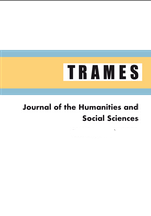ROYAL JOSEON SOGYŎKSŎ AND PŎPCHO: THE PHILOSOPHICAL ENCUMBRANCE OF SARIM IN THE KIMYO LITERATI PURGE (1519)1
ROYAL JOSEON SOGYŎKSŎ AND PŎPCHO: THE PHILOSOPHICAL ENCUMBRANCE OF SARIM IN THE KIMYO LITERATI PURGE (1519)1
Author(s): David W. KimSubject(s): Cultural history, Ethics / Practical Philosophy, Political history, Early Modern Philosophy, East Asian Philosophy, 16th Century
Published by: Eesti Teaduste Akadeemia Kirjastus
Keywords: Joseon History; Sarim faction; Literati Purge of 1519; Sogyŏksŏ; Korean Taoism;
Summary/Abstract: The early modern history of the Joseon dynasty (1392–1910) in East Asia is often depicted as an era of political conflict between the king, the Hun’gu faction, and the Sarim faction. The four major Sahwa (literati purges) reflect its seriousness through which Neo-Confucian scholars were sacrificed by the punishments of execution, exile, or dismissal. The Kimyo Sahwa was the most notorious incident for the Chinese ideology of the Sarim political party. What, then, happened in 1519? What kind of social transformation occurred in relation to the Sungkyunkwan scholars (the national university of the era)? Why did the public office of Daoist Sogyŏksŏ become one of the most controversial issues at the Joseon court? How was the royal shrine of Samch’ŏngjŏn criticised by the leaders of the Sarim faction? This paper explores the politico-religious landscape of early modern Korea through the key features of Jungjong coup (Royal Coup of 1506), Jo Gwangjo (1482–1520) and ‘the Literati Purge of 1519’, and argues the critical insight that the Daoist rituals and sacred sites (altars for the sky, stars, and gods) were traditionally maintained in the Pŏpcho philosophy of the royal sovereignty even if the culture of Jongmyo (ancestral altars) and Sajik (altars of soil and grain) were legally implemented at the beginning of the Confucian Joseon.
Journal: TRAMES
- Issue Year: XXV/2021
- Issue No: 4
- Page Range: 451-470
- Page Count: 20
- Language: English

